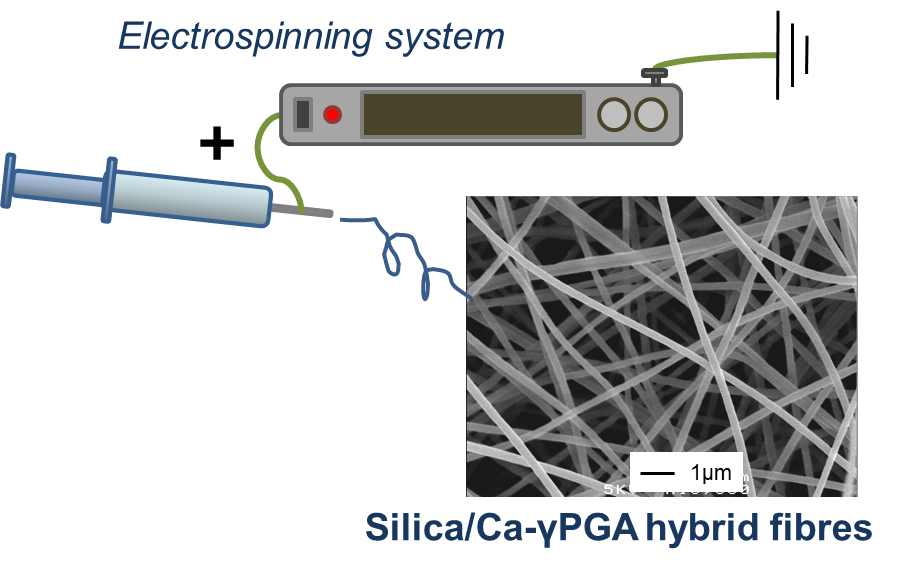Introduction: One of the approaches currently in use in developing scaffold biomaterials for tissue engineering is electrospinning (ES). Nano and micro scale fibres can be fabricated cost-effectively from solutions of various substances with ES. Poly(γ-glutamic acid), γ-PGA, is an anionic biopolymer and its calcium salt forms are synthesized using calcium hydroxide (Ca(OH)2) in water. Silica/Ca-γPGA hybrids made with glycidoxypropyl trimethoxysilane (GPTMS) hybrids (GPTMS/Ca-γPGA) are expected to be promising candidates for the use in bone regeneration, especially the application for bone tissue engineering scaffolds. Incorporated cations have been known to influence structures of γ-PGA and silica networks. Here, silica/Ca-γPGA hybrids were synthesized and the effect of Ca(OH)2 and GPTMS concentrations on the molecular structure, degradation rate and tensile properties of the hybrids were investigated.
Materials and Methods: Silica/Ca-γPGA hybrid solution was prepared by mixing GPTMS and Ca-γPGA in Milli-Q water for 3 h at R.T. and then electrospun, resulting in silica/Ca-γPGA hybrid fibremats. The ratios of γPGA: 1/2Ca(OH)2 and γPGA:GPTMS were set to be 1:0.6-0.9 and 1:0.2-0.4, respectively.
Results: Attenuated-total reflection Fourier-transformed infrared spectroscopy (ATR-FTIR) data indicated that cross-linking between γ-PGA chains was achieved due to coupling reaction between the polymer side chain and epoxy terminated group of GPTMS and silica network formation between GPTMS molecules. 13C CP/MAS-NMR and 29Si MAS-NMR spectra indicated that open epoxy groups in GPTMS reacted with each other and the rate of condensation between its silanol groups was lower when the additive amount of Ca(OH)2 was smaller. Tensile test data demonstrated that elongation to failure was improved for the hybrid fibremat in comparison with just Ca-γPGA fibremats. Silica/Ca-γPGA hybrids were found to exhibit the stability under physiological conditions (for more than 3 weeks in Tris buffer solution), with controlled release of soluble silica and calcium which are known to stimulate osteogenic cells.
Discussion: The amount of Ca(OH)2 added influenced the chemical structure of the resulting hybrid fibres at the molecular level, increasing silica network connectivity, and subsequently related to their mechanical properties and degradation behaviour.
Conclusion: Silica/Ca-γPGA hybrid fibremats were fabricated in water and need no additional treatment for completely removing any solvents, which results in their high safety and must be one of the advantages for inducing proteins, growth factors etc., into them in future.

The present work was carried out under the framework of Academic Unit Cooperation Program between Frontier Research Institute for Materials Science, Nagoya Institute of Technology and Department of Materials, Imperial College London. This work was partially supported by JSPS KAKENHI Grant Numbers 26820304.